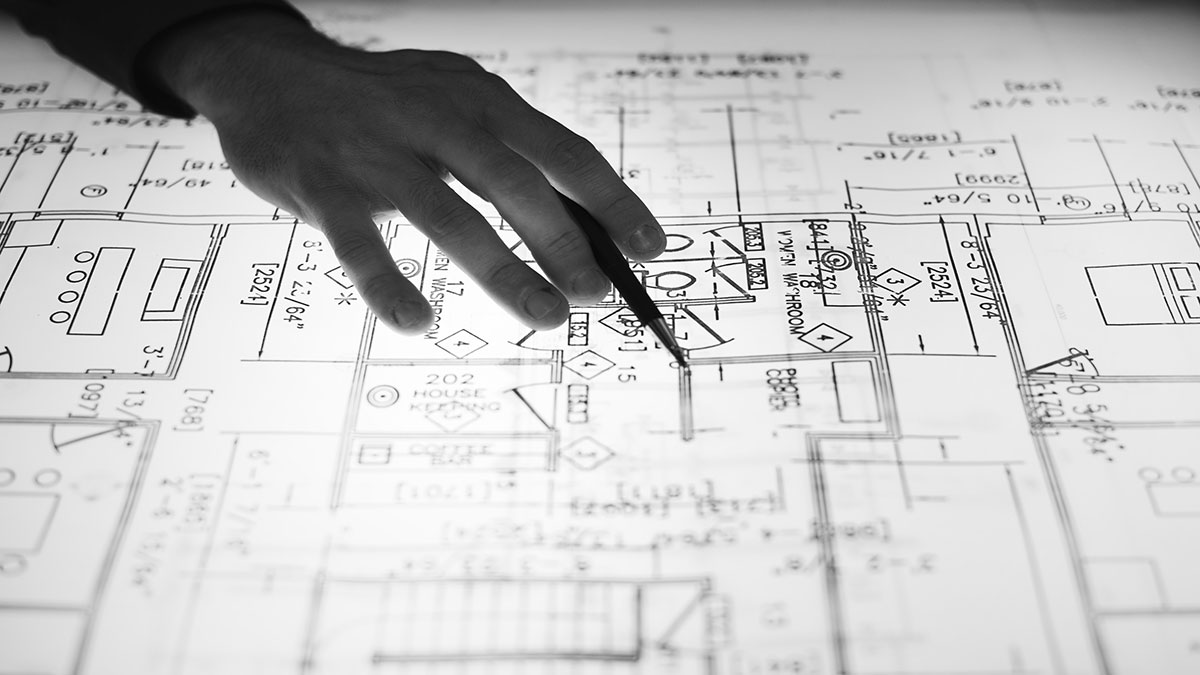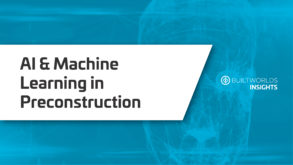
A construction project can be a time-consuming undertaking, stretching across several months-- and even years--depending on the scope and complexity of the building in question. While not every project is the same, no matter what type of job you are working on, the most vital time period in any project happens before any concrete is laid or drywall is installed. The pre-construction phase is the bedrock of a building project. It’s where the actual planning takes place and builders figure out how to actually tackle the project ahead of them.
“The pre-construction phase is very special in that it’s level of influence is the highest,” said Rene Morkos, Founder and CEO of ALICE Technologies. “The cost of switching [construction apporaches] at an early stage is basically zero. But once you start construction, the cost of switching increases.”
It is essential for builders to get the pre-construction phase right, or else the consequences will ripple out through the rest of the job, and will create delays and unexpected costs. There are many digital solutions on the market to assist builders as they begin planning their projects. At our Projects New York City Conference, our Research Manager Matt Gagne will be sitting down with a few leaders of these pre-construction solutions to talk about how AI and machine learning are changing the way we plan our construction projects. BuiltWorlds talked with a few members of that panel about the future of these technologies, and how builders can currently utilize machine learning and AI solutions. Here are three key ways you can leverage these technologies to successfully tackle your next pre-construction process.
1. Generate building plans and optimized solutions
As a rule of thumb, technology is always making things move smoother and faster. The same is true of machine learning.
At Parafin, Co-Founders Brian Ahmes and Adam Hengels share a vision of the built future where, as Adam puts it, “buildings will be 3D printed in weeks using a robotic workforce, designed using algorithms in days, and bought, sold, leased and financed on the blockchain in minutes."
One way Parafin is making the pre-construction process faster is through the use of generative design. This process, which is a lot like evolution in nature, is when computer algorithms run through a variety of building layouts in a short duration of time, before coming up with the most efficient and optimized solutions.
RELATED CONTENT
“Generative design is really trial and error on steroids,” Hengels told us at our Buildings 2.0 Conference. “We take parametric design to another level using algorithmic processes.”
Generative design saves a lot of time for both contractors and architects upfront. Not only does it eliminate wasteful back-and-forth between builders and architects, but it also gives you the most optimized solution in a fraction of the time it would take a design to come up with one.
“How many damn times do we architects have to draw the same space or layout?“ Ahmes asked. “Why not spare your architect tedious iterations, and let generative design do millions of permutations on a site to create the most value?”
Why not spare your architect tedious iterations, and let generative design do millions of permutations on a site to create the most value?
2. Improve project scheduling and overcome construction hurdles
One of the hardest parts of making a complicated building project a reality is simply scheduling the entire process. No project is the same; specifications and requirements shift across even the most uniform of buildings. Taking into account the various complexities of each construction project, one of the hardest things to do in the pre-construction process is to schedule out the entire project. Different wrenches, thrown into the airtight vacuum of a project’s planned schedule, push deadlines and completion dates.
ALICE Technologies is trying to tackle this complicated process by using AI to create a parametric schedule for the project. Users “teach” the computer the rules of the jobsite, and how they go about completing tasks--like building a column or installing concrete. The program processes workflow schedules from that information.
“ALICE generates 20 or 30 different ways to build a project in three hours,” said Morkos. “This could take you several months, if not years.”
ALICE generates 20 or 30 different ways to build a project in three hours. This could take you several months, if not years.
With this plan in hand, builders can then calculate how long certain work-related problems (night work or adding cranes) will add to the schedule.
Morkos describes this as “the highest level of influence,” because the ability to implement construction hurdles into a project’s overall schedule can save builders an exorbitant amount of time and money.
3. Mitigate risks and costs
I think we can all agree that jobsites are inherently costly places. Yet, there are AI and machine learning solutions that are driving down costs on projects.
“AI is helping mitigate before the project actually begins,” said Satyam Verma, a partnerships and market development lead for Pype. “I think a real driver of change is the fact that people realize that by marginally increasing your upfront operational costs through technology, you’re able to significantly decrease the project-related costs that you see in the latter half of the project.”
I think a real driver of change is the fact that people realize that by marginally increasing your upfront operational costs through technology, you’re able to significantly decrease the project-related costs that you see in the latter half of the project.
For example, Pype’s AutoSpecs program allows users to tackle the sometimes overwhelming amount of spec documents. Going through these thousands and thousands of pages to create submittal logs takes an enormous amount of time, and can cause delays on a project before the first brick is even laid. AutoSpec generates logs in a fraction of the time by the use of algorithms, which pick out important pieces of information users submit in the form of other documents.
Pype also aggregates data from “across multiple projects in multiple industries across different types of buildings” to give users business intelligence on their newest project. If you are trying to build a certain type of building, it helps to see how another builder successfully accomplished another similar project beforehand.
“Good data from those projects can be used to forecast certain things like risk elements,” said Pype’s CEO and Co-Founder Sunil Dorairajan.
Again, this saves companies money upfront before they even begin working on a construction project.









Discussion
Be the first to leave a comment.
You must be a member of the BuiltWorlds community to join the discussion.